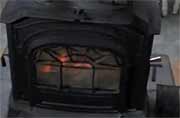
SUNDAY, Nov. 25 (HealthDay News) — The arrival of cold weather increases the risk of carbon monoxide poisoning, which can occur when gas furnaces, fireplaces and other heating devices don’t work properly and release the dangerous gas into homes, experts warn.
“You can’t see or smell carbon monoxide, but it can cause significant health issues and possibly kill you,” Dr. Kalpalatha Guntupalli, chief of the pulmonary critical care and sleep section at Harris Health Ben Taub Hospital and a professor at Baylor College of Medicine, said in a Harris Health System news release.
Carbon monoxide enters the bloodstream and robs the body of oxygen. Mild exposure to the gas can be easily treated, but high or prolonged exposure to carbon monoxide can be fatal.
Signs of carbon monoxide exposure include headache, dizziness, confusion, nausea or vomiting, and weakness.
Each year in the United States, about 400 people die and 4,000 are hospitalized for carbon monoxide poisoning, according to the U.S. Centers for Disease Control and Prevention. About 20,000 people get sick enough from carbon monoxide exposure to visit an emergency department.
The elderly, children and people with chronic conditions such as heart disease, anemia and lung problems are at greatest risk, the study authors noted.
Guntupalli’s team urged everyone to get their gas heating devices checked for carbon monoxide leaks. Other potential sources of carbon monoxide include gas stoves, lanterns and wood-burning fireplaces.
In addition, Dr. Nick Hanania, director of the Asthma Clinical Research Center at Harris Health Ben Taub Hospital and an associate professor at Baylor College of Medicine, pointed out that people should never use gas-powered generators or charcoal grills indoors, or use gas stove tops and ovens to stay warm.
All homes should have carbon monoxide detectors, he added.
“You could be creating carbon monoxide and not realize it until it’s too late,” Hanania said. “The dangers of carbon monoxide are too great to ignore.”
More information
The American College of Emergency Physicians has more about carbon monoxide.

